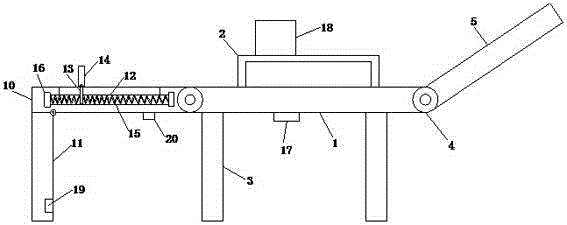Examination chair used for neurology
A neurology, chair seat technology, applied in dental chairs, dentistry, applications, etc., can solve problems such as single function, prolonged patient recovery period, delayed treatment time, etc., to achieve the effect of improving recovery speed and strong practicability
- Summary
- Abstract
- Description
- Claims
- Application Information
AI Technical Summary
Problems solved by technology
Method used
Image
Examples
Embodiment Construction
[0016] The following will clearly and completely describe the technical solutions in the embodiments of the present invention with reference to the accompanying drawings in the embodiments of the present invention. Obviously, the described embodiments are only some, not all, embodiments of the present invention. Based on the embodiments of the present invention, all other embodiments obtained by persons of ordinary skill in the art without making creative efforts belong to the protection scope of the present invention.
[0017] see Figure 1-5 , the present invention provides a technical solution: an examination chair for neurology, comprising a seat 1, the upper end surface of the seat 1 is provided with armrests 2, and the lower ends of both sides of the armrests 2 are provided with sleeves 22, so that Both sides of the upper end surface of the seat 1 are provided with L-shaped chute 23 corresponding to the handle 2, the inner cavity of the L-shaped chute 23 is horizontally ...
PUM
 Login to View More
Login to View More Abstract
Description
Claims
Application Information
 Login to View More
Login to View More - R&D
- Intellectual Property
- Life Sciences
- Materials
- Tech Scout
- Unparalleled Data Quality
- Higher Quality Content
- 60% Fewer Hallucinations
Browse by: Latest US Patents, China's latest patents, Technical Efficacy Thesaurus, Application Domain, Technology Topic, Popular Technical Reports.
© 2025 PatSnap. All rights reserved.Legal|Privacy policy|Modern Slavery Act Transparency Statement|Sitemap|About US| Contact US: help@patsnap.com



